- Home
- Sharyn McCrumb
The Devil Amongst the Lawyers
The Devil Amongst the Lawyers Read online
THE DEVIL AMONGST
THE LAWYERS
Also by Sharyn McCrumb
THE BALLAD NOVELS
If Ever I Return, Pretty Peggy-O
The Hangman’s Beautiful Daughter
She Walks These Hills
The Rosewood Casket
The Ballad of Frankie Silver
The Songcatcher
Ghost Riders
THE NASCAR NOVELS
St. Dale
Once Around the Track
Faster Pastor (with Adam Edwards)
EARLY WORKS
Elizabeth MacPherson Novels
Sick of Shadows
Lovely in Her Bones
Highland Laddie Gone
Paying the Piper
The Windsor Knot
Missing Susan
MacPherson’s Lament
If I’d Killed Him When I Met Him
The PMS Outlaws
The Jay Omega Novels
Bimbos of the Death Sun
Zombies of the Gene Pool
SHORT STORY COLLECTION
Foggy Mountain Breakdown
THE DEVIL
AMONGST THE
LAWYERS
A BALLAD NOVEL
SHARYN
McCRUMB
THOMAS DUNNE BOOKS / ST. MARTIN’S PRESS NEW YORK
This is a work of fiction. All of the characters, organizations, and events portrayed in this novel are either products of the author’s imagination or are used fictitiously.
THOMAS DUNNE BOOKS.
An imprint of St. Martin’s Press.
THE DEVIL AMONGST THE LAWYERS. Copyright © 2010 by Sharyn McCrumb. All rights reserved. Printed in the United States of America. For information, address St. Martin’s Press, 175 Fifth Avenue, New York, N.Y. 10010.
www.thomasdunnebooks.com
www.stmartins.com
Book design by Gretchen Achilles
LIBRARY OF CONGRESS CATALOGING-IN-PUBLICATION DATA
McCrumb, Sharyn, 1948–
The devil amongst the lawyers : a ballad novel / Sharyn
McCrumb.—1st ed.
p. cm.
ISBN 978-0-312-55816-1
1. Journalists—Fiction. 2. Trials (Murder)—Fiction. 3. Mountain life—Virginia—Fiction. 4. Appalachian Region—History—20th century—Fiction. 5. Virginia, Southwest—20th century—Fiction. 6. Ballads—Fiction. I. Title.
PS3563.C3527D48 2010
813'.54—dc22
2009045768
First Edition: June 2010
10 9 8 7 6 5 4 3 2 1
In memory of
Dr. John D. Richards
ACKNOWLEDGMENTS
The Devil Amongst the Lawyers is a fictionalized version of the 1935 murder trial of Edith Maxwell, which took place in Wise County, Virginia. Although I changed the names and took some liberties with the details of the historical event, I have tried to be accurate about the people and places described in the novel. Never Seen the Moon: The Trials of Edith Maxwell by Sharon Hatfield is the definitive account of the Edith Maxwell trial for those interested in a nonfictional treatment of the story.
My thanks to H. William (Bill) Smith, Wise County director of tourism, marketing, and community development, who was my guide in my visits to Wise County, shepherding me through Pound, through the Wise courthouse, the jail, and every floor of the now-derelict Wise Inn, which housed the journalists in the novel. Lena McNicholas, who is a cousin of Edith Maxwell and remembers her from that era, gave me valuable insight into the family situation and on other relatives’ opinions of the event. Retired Roanoke Times newspaper reporter Paul Dellinger, who has covered his share of murder trials in southwest Virginia, was my window into the world of the journalists covering the trial, particularly the Johnson City reporter Carl Jennings. Melissa A. Watson, library manager of the Historical Society of Washington County, Virginia, assisted me in my reconstruction of a stay in Abingdon in 1935.
Patricia Twilla, Steve Womack, Clyde Howard, Jane Hicks, Richard Cunningham, and Ward Burton all gave me insights into various aspects of the story, and I thank them for their help and their friendship. Most of the details of Carl Jennings’s life and family history, as well as the true story of the hanging of the elephant in Erwin, Tennessee, are taken from the life of my late father, Dr. Frank Arwood.
The epigraphs at the beginning of each chapter in the novel are taken from seventeenth-century poet Matsuo Bash’s Oku no Hosomichi (Narrow Road to a Far Province). In order to fashion an English version of his verse, I consulted several native speakers of Japanese and two English translations of Bash: A Haiku Journey, translated by Dorothy Britton (Tokyo: Kodansha America, 1980), and Narrow Road to the Interior and Other Writings, translated by Sam Hamill (Boston: Shambhala Publications, Inc., 1998).
I am grateful for all the assistance I received in my study of Japanese folklore and customs, particularly for the advice of Ichiro and Yuka Wada of Osaka, who provided me with excellent guidance toward the material I needed to describe Henry’s sojourn in 1920s Japan. It is from them that I first learned of the Kant Earthquake.
And, finally, thanks to my editor, Kathleen Gilligan of Thomas Dunne Books, and my agent, Irene Goodman, for their patience and encouragement, and for accompanying me on this long, strange trip.
It seems to me curious, not to say obscene and thoroughly terrifying, that it could occur to an association of human beings drawn together through need and chance and for profit into a company, an organ of journalism, to pry intimately into the lives of an undefended and appallingly damaged group of human beings, an ignorant and helpless rural family, for the purpose of parading the nakedness, disadvantage and humiliation of these lives before another group of human beings, in the name of science, of “honest journalism” (whatever that paradox may mean), of humanity, of social fearlessness, for money, and for a reputation for crusading and for unbias which, when skillfully enough qualified, is exchangeable at any bank for money (and in politics, for votes, job patronage, abelincolnism), and that these people could be capable of meditating this prospect without the slightest doubt of their qualification to do an “honest” piece of work, and with a conscience better than clear, and in the virtual certitude of almost unanimous public approval.
—JAMES AGEE
THE DEVIL AMONGST
THE LAWYERS
PROLOGUE
He had been there that day, all right. The day of the hanging. His family had always conceded that, but they insisted that he could not possibly remember the events of that day. He had been a babe in arms, not even a year old. Whenever he asked about it, they would flip through the thick black pages of the pasteboard family album and point to the sepia snapshot of him cradled in his mother’s arms, peering out of the patchwork baby quilt with an infant’s frozen stare.
September 13, 1916.
He had been born the previous December, surely too young for the event to have registered in his mind. Perhaps he had imagined the memory from hearing about it later. Growing up, he had heard the tale often enough from his young uncles, who had worked in the railroad yard as his father did. They had all been there, hooting and hollering, jostling the crowd for a better view, and one of them had brought his black box Kodak Brownie, and it was he who snapped the family photos of the occasion: carefully posed shots of the Jennings brothers, bunched together and smiling, and one of a solemn teenaged sister-in-law holding baby Carl, and looking uneasy to be in the raucous crowd. There was only one snapshot that the shutterbug uncle had forgotten to take.
The elephant.
Surely, Carl reasoned, he couldn’t recall that day, not even a year into his life. But although the photos had been in black and white, he remembered
the day in a swirl of colors: the sharp blue of the late summer sky, shaggy Buffalo Mountain looming over the railroad yard.
But you’ve seen that all your life, Carl. You’ve been there a thousand times. It’s where your daddy works.
But he also remembered the eyes.
Those sad black eyes in a shapeless gray face, seeming to look directly at him.
All this he remembered, or thought he did. It was only later, when he went to work for the newspaper, that he found out the most important part of the story: why it happened.
IN 1916 CHARLIE SPARKS’S little ragtag circus, five railroad cars of tents and costumes, show people and wild animals, toured the small towns of the Bible Belt, outclassed in the major markets by the Ring-ling Brothers outfit, which was itself almost a city, an eighty-four-railroad-car megalopolis that dazzled even the sophisticates in New York and Chicago, who had damn near seen it all. But if you lived in a jerkwater railroad town in central Kentucky, or southwest Virginia, or east Tennessee, then Charlie Sparks’s shabby little circus was all the magic you were ever likely to get.
The wagons would roll into town a day or two after the posters went up, drumming up local interest with a noon parade down Main Street, and then they’d head off to the fairgrounds to set up the tents, water the livestock, and lay out the midway for the coming performance.
Besides the well-trained dogs, the performing sea lions, the clowns, the pretty girl bareback riders, and the acrobats, Charlie Sparks’s show had five elephants, including a big Indian pachyderm named Mary, who, according to Sparks, was a few inches taller than P. T. Barnum’s Jumbo. Well, who in the hinterlands would know any different? Big Mary was thirty years old, and a real crowd-pleaser. They said she could play tunes on a row of musical horns, and she could hit a baseball by swinging a bat with her trunk.
The ragtag little circus worked its way along the Clinchfield railroad towns, from Jenkins in eastern Kentucky, over the mountain to the village of St. Paul, Virginia. Their next stop would be Kingsport, just past the Tennessee line. First, though, they had to hire a new “under keeper” for the elephants. The last fellow had up and quit in Kentucky, so on Monday, September 11, at the stopover in St. Paul, they took on Red Eldridge, a drifter who had turned up in coal country, looking for work wherever he could find it. The thought of being nursemaid to an elephant must have struck him as a likely job for a drifter: endless travel, and a fair chance of excitement.
On Tuesday, September 12, the circus arrived in Kingsport, and there was Red Eldridge, bigger’n life, making his debut in show biz: riding on the neck of Big Mary. After the parade, they took the elephants to a watering hole, and from there they were plodding along on to the circus grounds for the afternoon show, with a crowd of townfolk lined up to watch the procession. Mary spotted a discarded hunk of watermelon on the ground, and when she went for it her brand-new handler prodded her sharply in her sore ear, to keep her in line.
An instant later, Red Eldridge was flying through the air, on his way to an abrupt exit from show business and from life. He went headfirst into a lemonade stand and slumped to the ground—maybe unconscious, but certainly in no state to jump right up and get moving again. Perhaps some of the spectators thought to go and help him, but Mary got there first. Before he could stir, she put her massive front foot on his head and pushed down with all her weight. People screamed, and some of them ran, but nobody went near Red Eldridge, because everybody could see that he was well past help.
EVERYBODY IN EAST TENNESSEE knew what happened next, but Carl only learned why it happened by chance, after he grew up and became a journalist. At lunch in the Dixie Grill on Roan Street a veteran reporter was reminiscing about his early days on the job at the Johnson City Staff. Carl had just gone to work for the paper, and the old man remarked that he hadn’t been much older than Carl when he first became a journalist, back at the turn of the century. In his rumpled gray suit with baggy trousers, fraying shirt cuffs, and a skinny tie, the old man reminded Carl of a mournful elephant, which is probably what prompted him to ask the question.
“Did you cover the hanging of the elephant?” he asked.
“Cover it?” The old reporter smiled. For several moments he continued to tap bits of tobacco out of the little cotton drawstring pouch and into a little square of rolling paper. When he had packed the tobacco fragments into a tight line and rolled up the paper, he licked the edge to seal it, and stuck the cigarette between his lips. “Cover it? Son, I caused it.”
He offered the matchbook and the little bag of tobacco to Carl, who waved it away, pointing to his plate to indicate that he wasn’t finished eating. He was embarrassed to admit that he didn’t smoke, and that he could ill afford to start. “I was there,” said Carl. “At the hanging. I was a baby, though. I don’t remember it. They tell me I don’t, anyhow.”
The reporter shrugged. “Well, I’ll never forget it. That crazy rogue elephant just stomped her trainer flat over in Kingsport. The sheriff—George Barger, it was—pulled out his pistol and fired the whole cylinder into that beast, but she didn’t even flinch. There was a blacksmith in the crowd who shot at her, too, but pretty soon everybody realized that you couldn’t kill that thing with bullets. The crowd was calling for blood, of course, seeing as how they’d just seen the creature kill a man, but they would have calmed down in an hour or two, and that would have been the end of it.”
Carl had just taken a bite of his hamburger, and while he chewed it, he was thinking things he might not have said aloud: Well, wouldn’t it have been a good thing if they’d let the matter drop? It was just a poor animal, maybe even mistreated by that trainer she killed, and what would be the point of destroying a creature who doesn’t know right from wrong, anyhow? Perhaps his expression revealed his thoughts, because the old reporter shook his head, as if contradicting the unspoken opinion.
“I can see you’re not thinking like a newspaper man, son,” he said, tapping a column of cigarette ash into his congealing French fries. “You’re probably thinking up flowery editorials that would counsel mercy for this poor dumb beast. Well, that’s short-sighted thinking. What you need to do is make sure the story doesn’t end there. Nudge it along to the next level.”
Carl took a swig of soda pop through the paper straw. “How?”
“Why, you push the story along for further developments. Write pieces geared toward keeping people stirred up. I was mortally afraid that those circus people were going to grab the first train across the state line after the show in Kingsport that night, but I guess they couldn’t change their schedule without losing a deal of money, so sure enough, they kept right on planning to head to Johnson City for the next performance. And there I had ’em!”
“Had them?”
The old reporter helped himself to one of Carl’s ketchup-soaked French fries and waved it for emphasis. “The circus management. Because the circus was going to try to play Johnson City. And Johnson City had just passed an ordinance to restrict the operation of traveling shows within the city limits. The city fathers weren’t happy with all the fly-by-night con games and girlie shows floating around on the carny circuit at the time, and they were just looking for a likely excuse to keep carnivals out of the city altogether. A murdering elephant was all the excuse they needed. ‘In the interest of public safety,’ the performance would be banned, not only that week, but permanently thereafter. I didn’t think that shoestring circus outfit could stand the loss of revenue. Oh, I had that circus boss, all right. They couldn’t run and they couldn’t hide.”
Carl thought about it. “So the circus owner decided to sacrifice the elephant to prove to the Johnson City officials that the show was safe for the local citizens?”
The reporter shrugged, and stubbed out his cigarette on his plate. “Well, he didn’t want to, of course. That thing must have been worth ten thousand dollars, maybe twice that, even. But I let him know that I was writing a story, and that the paper would come out Wednesday morning—the day they would be
arriving in Johnson City. Oh, it was a hell of a story. I had eyewitnesses, saying that the elephant had squashed her trainer’s head like an overripe watermelon. I waxed eloquent over the lawman pumping bullets into the beast, and her just standing there as calm as if those lead slugs were raindrops . . . How could you control a beast as strong as that? A killer? Why, he would have been lucky if nobody had showed up for his circus in Johnson City. More likely, folks would have come with pitchforks and torches, ready to take another crack at executing that rogue elephant. When I made all that clear to him, what choice did he have?”
“Well, I would have gotten out of Tennessee,” said Carl.
“Too late. That story of mine would have dogged them everywhere they went. Scandal travels by railroad from one whistle-stop to another, same as the circus did. So they decided to make a virtue of necessity, and turn that elephant’s destruction into a public spectacle.”
Carl nodded. “They took her over to the railroad yards in Erwin, where my daddy works.”
“Yep. Announced it at the parade in Johnson City. Come one, come all. Free admission. ‘See the killer elephant pay for her crime.’ They knew by then that bullets and electricity were useless, so they commandeered one of those big cranes the railroad uses to lift locomotives off the track, and they fitted the strongest chain they could find to the hook on that crane. They figured to string her up. Must have been five hundred people there in the railroad yard to watch it happen.”
Carl stopped listening then. He stared down at the pool of congealing ketchup on his plate, as the stream of gleeful spite rolled over him. He hardly drew a breath, willing himself not to betray his feelings by so much as a word. He did remember that day. He had seen those sad, dark eyes, comprehending more than his infant self had done. And now he was sitting across a table from the man who had made it happen.

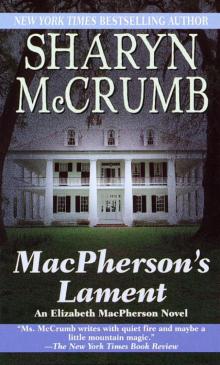 Elizabeth MacPherson 07 - MacPherson’s Lament
Elizabeth MacPherson 07 - MacPherson’s Lament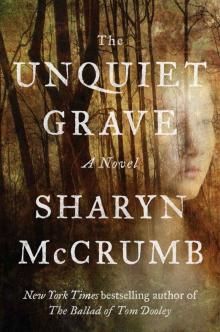 The Unquiet Grave: A Novel
The Unquiet Grave: A Novel The PMS Outlaws: An Elizabeth MacPherson Novel
The PMS Outlaws: An Elizabeth MacPherson Novel Prayers the Devil Answers
Prayers the Devil Answers Paying the Piper
Paying the Piper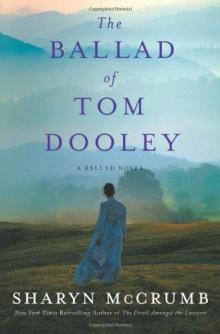 The Ballad of Tom Dooley: A Ballad Novel
The Ballad of Tom Dooley: A Ballad Novel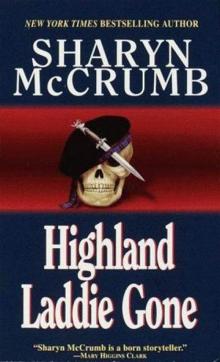 Highland Laddie Gone
Highland Laddie Gone The Unquiet Grave
The Unquiet Grave The Devil Amongst the Lawyers
The Devil Amongst the Lawyers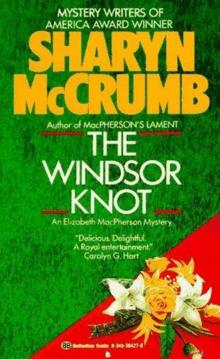 The Windsor Knot
The Windsor Knot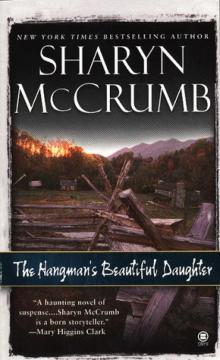 The Hangman's Beautiful Daughter
The Hangman's Beautiful Daughter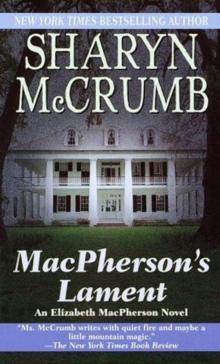 MacPherson's Lament
MacPherson's Lament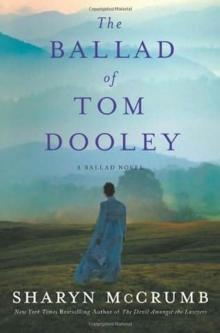 The Ballad of Tom Dooley
The Ballad of Tom Dooley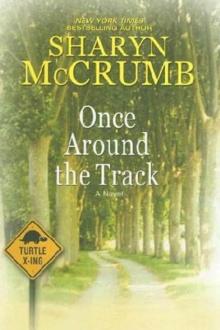 Once Around the Track
Once Around the Track St. Dale
St. Dale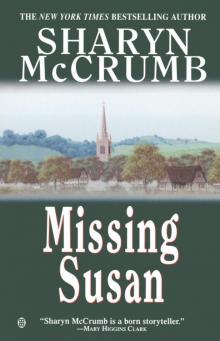 Elizabeth MacPherson 06 - Missing Susan
Elizabeth MacPherson 06 - Missing Susan If I'd Killed Him When I Met Him…
If I'd Killed Him When I Met Him…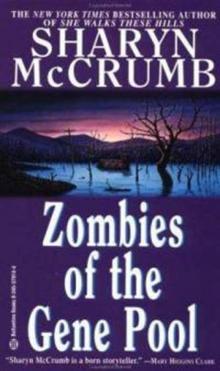 Zombies of the Gene Pool
Zombies of the Gene Pool Bimbos of the Death Sun
Bimbos of the Death Sun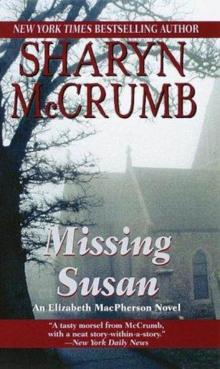 Missing Susan
Missing Susan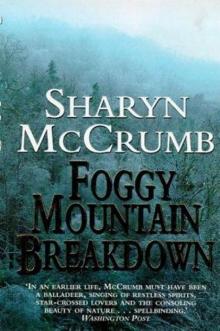 Foggy Mountain Breakdown and Other Stories
Foggy Mountain Breakdown and Other Stories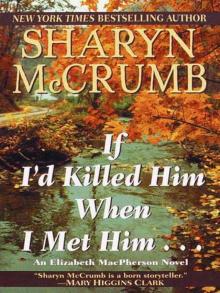 If I'd Killed Him When I Met Him
If I'd Killed Him When I Met Him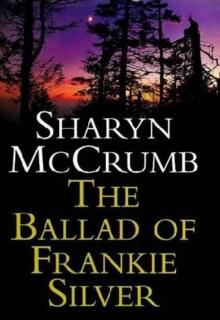 The Ballad of Frankie Silver
The Ballad of Frankie Silver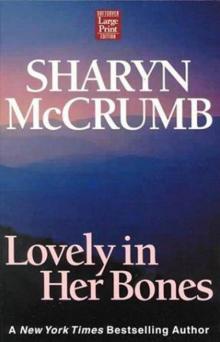 Lovely In Her Bones
Lovely In Her Bones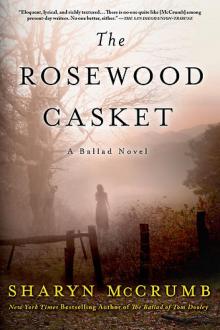 The Rosewood Casket
The Rosewood Casket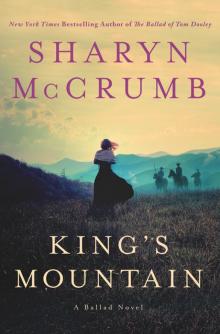 King's Mountain
King's Mountain